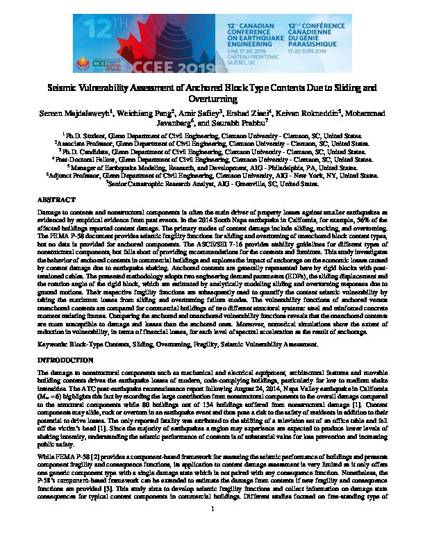
Damage to contents and nonstructural components is often the main driver of property losses against smaller earthquakes as evidenced by empirical evidence from past events. In the 2014 South Napa earthquake in California, for example, 56% of the affected buildings reported content damage. The primary modes of content damage include sliding, rocking, and overturning. The FEMA P-58 document provides seismic fragility functions for sliding and overturning of unanchored block content types, but no data is provided for anchored components. The ASCE/SEI 7-16 provides stability guidelines for different types of nonstructural components, but falls short of providing recommendations for the contents and furniture. This study investigates the behavior of anchored contents in commercial buildings and explores the impact of anchorage on the economic losses caused by content damage due to earthquake shaking. Anchored contents are generally represented here by rigid blocks with post-tensioned cables. The presented methodology adopts two engineering demand parameters (EDPs), the sliding displacement and the rotation angle of the rigid block, which are estimated by analytically modeling sliding and overturning responses due to ground motions. Their respective fragility functions are subsequently used to quantify the content seismic vulnerability by taking the maximum losses from sliding and overturning failure modes. The vulnerability functions of anchored versus unanchored contents are compared for commercial buildings of two different structural systems: steel and reinforced concrete moment resisting frames. Comparing the anchored and unanchored vulnerability functions reveals that the unanchored contents are more susceptible to damage and losses than the anchored ones. Moreover, numerical simulations show the extent of reduction in vulnerability, in terms of financial losses, for each level of spectral acceleration as the result of anchorage.
Available at: http://works.bepress.com/amir-safiey/2/

12th Canadian Conference on Earthquake Engineering
June 17-20, 2019
Chateau Frontenac
Québec, Canada
http://www.ccee2019.org/welcome-quebec-city